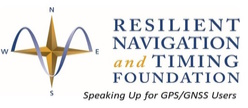By Dee Ann Divis
Ashton Carter, the new U.S. Secretary of Defense has been making clear he supports moving past GPS to a disbursed network based on microelectromechanical systems or MEMS for position, navigation, and timing (PNT) information.
Carter, who was tapped to lead the Pentagon in February, appears to have first publicly floated the idea a year ago, about six months after leaving the Department of Defense (DoD), where he had served most recently as deputy secretary of defense, a role that included cochairing the interdepartmental National Space-Based PNT Executive Committee.
“I hate GPS,” Carter said during a wide-ranging conversation about innovation in June 2014. “The idea that we are all hooked to a satellite — formerly bought by me to my great resentment — in a semi-synchronous orbit that that doesn’t work in certain circumstances, does not work indoors or in valleys in Afghanistan, is ridiculous.” His reference to buying GPS satellites refers to a previous stint (April 2009–October 2011) as undersecretary of defense for acquisition, technology, and logistics.
Speaking on the podcast a16z, which is supported by the Silicon Valley venture capital firm Andreessen Horowitz, Carter said he thought the constellation’s future was limited, and that in a couple of decades PNT information would be obtainable from highly capable computer chips installed in products to support the Internet of Things. The resulting network, he said, would be more resistant to jamming and disruption.
[big_button url=”https://insidegnss.com/u-s-secretary-of-defense-wants-to-move-past-gps-to-mems-based-navigation-pnt-experts-doubtful/”]Read More[/big_button]
